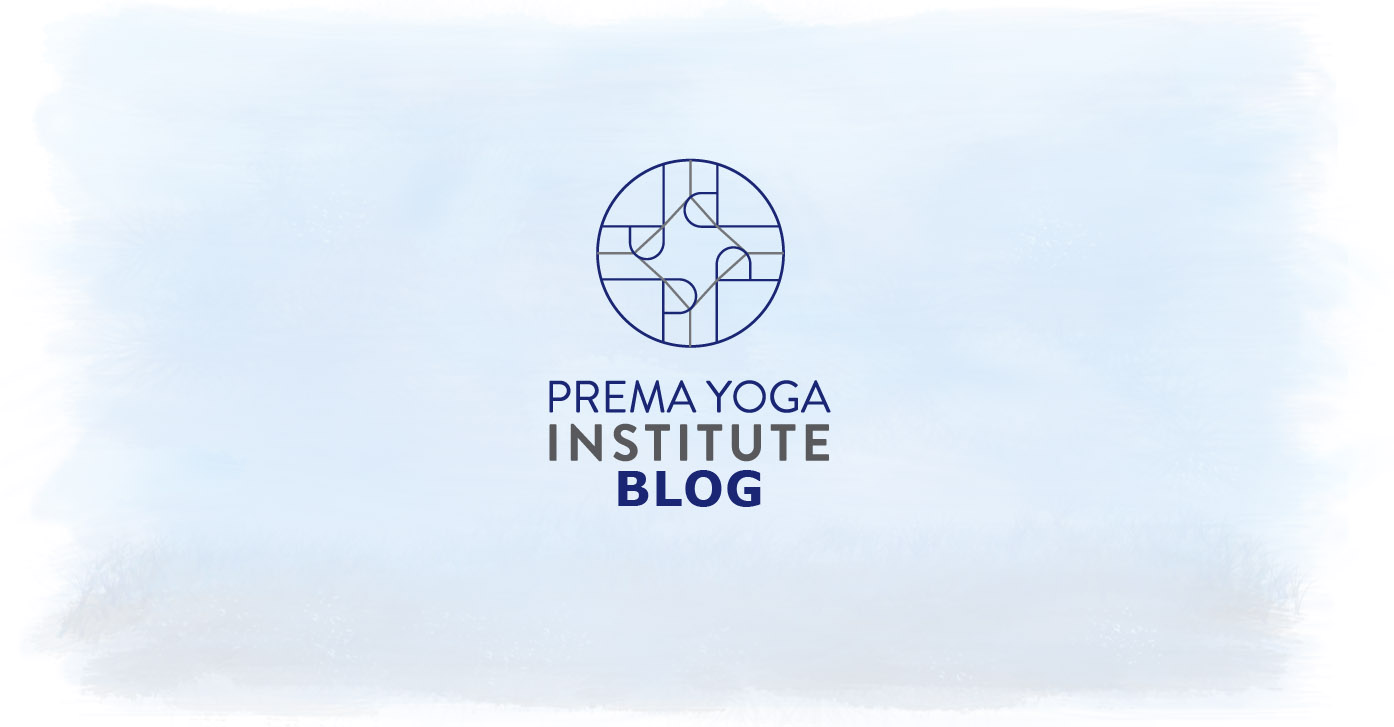
What is Dinacharya? How Yoga Therapy Uses These Daily Self-Care Routines
Ayurveda, the ancient science of life, emphasizes the profound impact of daily routines on overall health. This practice, known as dinacharya, is designed to align the body with natural rhythms, promoting balance and longevity.
In the context of yoga therapy, dinacharya serves as a powerful tool to restore equilibrium in the body and mind, fostering long-term well-being. By incorporating mindful rituals into our morning and evening routines, we create a foundation for physical, mental, and emotional health that enhances our yoga practice and therapeutic healing.
Why is Dinacharya Important in Yoga Therapy?
“A daily routine is absolutely necessary to bring radical change in body, mind, and consciousness,” says renowned Ayurvedic physician Vasant Lad.
In yoga therapy, daily routines help regulate digestion, optimize biological rhythms, and instill discipline and self-awareness. They also support the therapeutic process by reducing stress and addressing doshic imbalances.
In modern life, where overstimulation and stress are common, dinacharya provides a grounding force, especially for balancing vāta, the most easily disturbed dosha. Yoga therapy integrates dinacharya to create a structured approach for clients seeking long-term healing and balance.
Morning Routine: Awakening the Body and Mind for Yoga Practice
Ayurveda suggests rising with the sun to align with the body’s natural circadian rhythms. Upon waking, practices such as drinking warm water, emptying the bowels, and engaging in self-care rituals prepare the body for the day and enhance the effectiveness of yoga therapy.
These include:
Tongue Scraping & Oral Care: Cleansing the tongue removes accumulated toxins (āma) and provides insight into digestive health.
Oil Pulling & Gum Massage: Swishing oil, such as sesame or coconut, supports oral hygiene and removes toxins.
Nasal Cleansing (Neti & Nasya): Flushing nasal passages with saline and lubricating them with oil improves respiration and mental clarity.
Abhyanga (Self-Massage with Oil): Massaging warm oil into the skin nourishes the tissues, improves circulation, and calms the nervous system.
Prāṇāyāma, Yoga, and Meditation: Breathing exercises, movement, and mindfulness set the tone for a balanced and energized day.
Evening Routine: Preparing the Body for Deep Sleep
The evening is a time to wind down and shift into a state of relaxation. Avoiding screen time, bright lights, and overstimulation supports deeper rest.
Recommended practices include:
Abhyanga for Relaxation: Evening oil massage can calm the nervous system and prepare the body for sleep.
Herbal Teas and Warm Milk: Drinking soothing beverages, such as golden milk with turmeric, enhances digestion and relaxation.
Meditation or Gentle Yoga: Slow movement, restorative yoga, and relaxing mindfulness practices help transition into restful sleep.
Creating a Sustainable Routine for Yoga Therapy
Adopting a full Ayurvedic routine may seem overwhelming at first, but gradual integration is often most effective. Small, consistent changes - such as going to bed earlier, drinking warm water upon waking, or incorporating a short meditation - can lead to significant improvements in health and well-being.
In yoga therapy, these routines provide structure and stability, allowing individuals to harness their inner healing potential.
By honoring the rhythms of nature through dinacharya and integrating these practices into yoga therapy, we cultivate a sense of harmony that extends beyond the physical body. This practice allows us to reconnect with ourselves and move through life with greater ease, awareness, and healing.
Looking to study Ayurveda, Ayurvedic Yoga teaching and therapy further? Check out our annual 100-hour Ayurvedic Yoga Therapy Course.
Yoga Therapy for the Subtle: Prana, Tejas, and Ojai
In the practice of yoga and Ayurveda, the subtle energies of prana, tejas, and ojas form the foundation of our vitality, intellect, and resilience. These energies are the refined counterparts of the three doshas - Vata, Pitta, and Kapha - and play a crucial role in our overall well-being.
By understanding and balancing these forces, we can enhance our yoga practice, strengthen our health, and cultivate inner harmony.
Understanding Prana, Tejas, and Ojas
In Ayurveda, prana, tejas, and ojas are considered the three vital essences that sustain life and well-being. Each plays a unique role in maintaining physical, mental, and emotional balance, and understanding their qualities allows us to cultivate harmony through our yoga practice and daily routines. Unlike in some practices -- which only address increasing prana -- Ayurvedic principles suggest that these qualities should be strengthened gradually, and in tandem:
Prana is the life force that moves through us, driving our breath, circulation, and enthusiasm. It is linked to the air element and Vata dosha. When prana is balanced, we feel energized, inspired, and in tune with our surroundings. However, when it is excessive, it can create nervousness, insomnia, or hyperactivity. If deficient, it may lead to fatigue, lack of motivation, and even depression. Yoga and breathwork can help regulate prana and allow it to flow harmoniously through the body and mind.
Tejas is the inner fire, the energy of transformation, clarity, and discernment. It is connected to the fire element and Pitta dosha, giving us the drive and focus to pursue our passions and live with purpose. When tejas is in balance, it fuels intellectual curiosity, self-discipline, and insight. However, too much tejas can result in anger, frustration, and burnout, while too little can lead to apathy or confusion. A steady yoga practice, meditation, and mindful breathing can help balance tejas and cultivate a deeper sense of clarity and purpose.
Ojas is our reservoir of stability and immunity, the protective force that sustains us. It is related to the water element and Kapha dosha, playing a crucial role in maintaining strong immunity, emotional resilience, and a deep sense of well-being. A person with healthy ojas glows with vitality and inner peace. However, low ojas can result in exhaustion, frequent illness, and a sense of emotional depletion. Nurturing practices such as proper nutrition, deep rest, and self-care rituals help build and maintain ojas, ensuring long-term health and balance.
How Yoga Therapy Cultivates Balance
A balanced yoga practice incorporates breath, movement, and mindfulness to strengthen these subtle energies.
To build prana, incorporate pranayama techniques like Nadi Shodhana (alternate nostril breathing) and deep, rhythmic breathing exercises. Gentle, flowing asanas and seated meditation allow prana to move freely without becoming erratic. Practicing mindfulness in daily activities also strengthens prana and keeps the mind present and aware.
To cultivate tejas, practice focused breathwork like Kapalabhati (skull-shining breath) and incorporate dynamic movement, such as sun salutations and strong standing poses. Engaging in deep self-inquiry, reading spiritual texts, and studying under a teacher can also enhance tejas. This energy fuels our ability to take action and make meaningful decisions while maintaining inner balance.
To support ojas, prioritize restorative yoga, deep relaxation, and a nourishing diet. Practices such as self-massage (Abhyanga), spending time in nature, and cultivating loving relationships help protect and replenish ojas. Taking the time to slow down, reflect, and nourish the body and mind ensures long-term resilience and vitality.
Integrating Ayurveda into Daily Life
Balancing prana, tejas, and ojas requires a holistic approach that extends beyond the yoga mat. Modern lifestyles often overactivate prana and tejas while depleting ojas, leading to imbalances that manifest as anxiety, fatigue, and burnout. Reducing overstimulation - such as excessive screen time, chronic stress, and multitasking - helps regulate these energies and maintain equilibrium.
A nourishing, balanced diet plays a vital role in maintaining harmony. Eating warm, grounding foods like root vegetables and healthy fats supports ojas, while cooling foods like cucumbers and coconut pacify excessive tejas. Fresh, vibrant foods rich in prana, such as leafy greens and fruits, keep energy levels high and promote overall well-being.
Daily routines, or dinacharya, are another way to maintain balance. Waking up early, practicing self-care rituals like oil massage, engaging in yoga and meditation, and ensuring adequate sleep all contribute to sustaining healthy prana, tejas, and ojas. Simple acts of self-care, like drinking warm herbal tea or taking a mindful walk, can have profound effects on overall vitality and emotional stability.
By aligning our lifestyle and yoga practice with the wisdom of Ayurveda, we nurture a deep and lasting well-being that radiates from the inside out. When we cultivate prana, tejas, and ojas in harmony, we experience a life filled with clarity, vitality, and peace.
Looking to study Ayurveda, Ayurvedic Yoga teaching and therapy further? Check out our annual 100-hour Ayurvedic Yoga Therapy Course.
An Introduction to the Doshas: How Yoga Therapy Teaches Balance
Ayurveda, the sister science of yoga, teaches that our bodies and minds are governed by three fundamental energies called doshas: Vata, Pitta, and Kapha. These energies influence everything from our physical constitution to our mental tendencies and emotional well-being.
When they are in balance, we experience health and vitality; when they are out of sync, disease and discomfort arise.
Through the wisdom of yoga therapy, we can restore this delicate balance and cultivate a deeper connection with ourselves.
The Ayurvedic Cause of Disease
Ancient Ayurvedic texts, like the Charaka Samhita, suggest that disease arises from three primary causes: misuse of the senses, failure of intellect, and the effects of time and motion.
Overindulging in sensory pleasures or depriving ourselves of essential experiences can throw us off balance. Acting against our intuition and inner wisdom disrupts our natural equilibrium, while the passage of time, stress, and the pressures of daily life accelerate imbalances.
Yoga therapy serves as a bridge to reconnect us with our body’s intelligence, allowing us to make conscious choices that support our well-being. By integrating movement, breathwork, and lifestyle changes, we can align ourselves with our natural rhythms and maintain overall harmony.
Understanding the Three Doshas
Each of the three doshas embodies a unique combination of the five elements (earth, water, fire, air, and space), influencing our physical traits, personality, and health tendencies. Most individuals have one or two dominant doshas that shape their overall constitution.
Vata, the energy of air and ether, is linked to movement and creativity.
Those with a Vata dominance tend to be quick-thinking, expressive, and energetic, but when imbalanced, they may experience anxiety, restlessness, and digestive irregularities.
A grounding yoga practice with steady, rhythmic movements and deep, calming breaths can help restore stability. Nourishing, warm foods and mindful daily routines further support balance.
Pitta, governed by fire and water, represents transformation and drive.
Pitta-dominant individuals are passionate, sharp-witted, and natural leaders. However, excessive heat can lead to irritability, inflammation, and burnout.
To cool and pacify Pitta, soothing practices like Yin yoga, gentle forward bends, and cooling breath techniques are beneficial. A diet rich in cooling foods, such as fresh greens and hydrating fruits, can also help maintain equilibrium.
Kapha, the energy of earth and water, is the foundation of stability and nourishment.
Kapha types are strong, compassionate, and grounded, but when out of balance, they may feel sluggish, unmotivated, or experience weight gain.
Stimulating yoga practices, like dynamic Vinyasa or power yoga, can re-energize Kapha. Incorporating light, spicy foods and regular movement helps to keep this dosha balanced and vibrant.
Bringing the Doshas into Balance Through Yoga
Yoga therapy offers a personalized approach to well-being by recognizing our unique doshic makeup and adjusting our practices accordingly.
If you’re feeling anxious and ungrounded, slowing down and incorporating deep, steady breathwork can help. If you’re overheated and irritable, cooling postures and meditation can restore calm. If you’re feeling heavy and lethargic, invigorating movement and breathwork can reawaken energy. A trained Ayurvedic yoga therapist can assess what you need personally and effectively -- and also consult how your practice can change according to the season, the time of day, and your time of life for optimal health.
By weaving Ayurvedic wisdom into your yoga practice, you can cultivate lasting balance and inner harmony. Understanding your dosha allows you to make intentional choices that support not just physical health, but mental and emotional well-being as well.
Looking to study Ayurveda, Ayurvedic Yoga teaching and therapy further? Check out our annual 100-hour Ayurvedic Yoga Therapy Course.




















